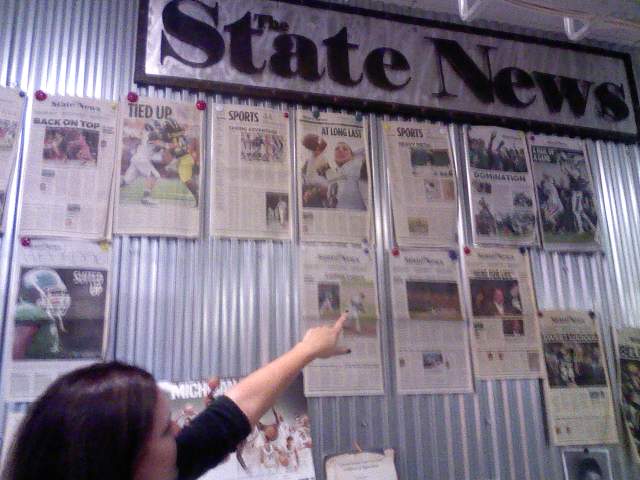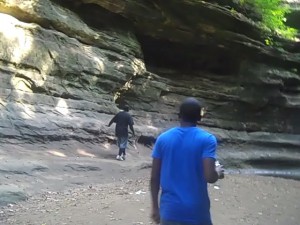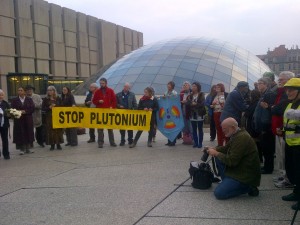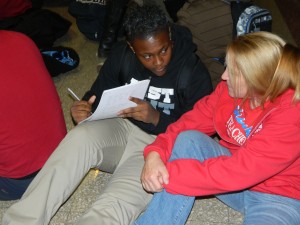Editor’s Note: The following story was written by a student in the Urban Youth International Journalism Program in partnership with Imagine Englewood If, a youth services organization based in that South Side neighborhood.

The student editor of Michigan State University's State News shows off recent editions of the publication during a visit this fall to the academic institution's campus. Photo by Tyreshia Black.
Every year, high school students across Chicago start preparing to attend a college or university. The effort is a big undertaking, and it is easy to get overwhelmed. There are so many different types of higher education institutions to choose from, and a lot of students don’t know what they’re looking for.
One important way that many students figure out what they want from a college is through a campus visit. During a visit, prospective students tour the campus, talk to professors, and learn about student life.
“It’s a lot of pressure,” said Tametrius Files, a 16-year-old Simeon High School student who has visited Eastern Illinois University, DePaul University and other schools.
Experts say it is important to make the most out of college visits.
Betty Weinberger, a college consultant at a Glencoe-based company called North Shore College Counseling Services, said in an e-mail interview that students must make realistic and appropriate plans in order to ensure their campus visits are worthwhile.
“You might begin by asking yourself the following questions,” she said. “Do you like a large school or small? Do you want to be in the city in an urban environment or do you prefer a suburban or even small town environment?”
Ms. Weinberger added that students should also think about college activities while on a campus tour as well as their fields of interest.
Read more »






